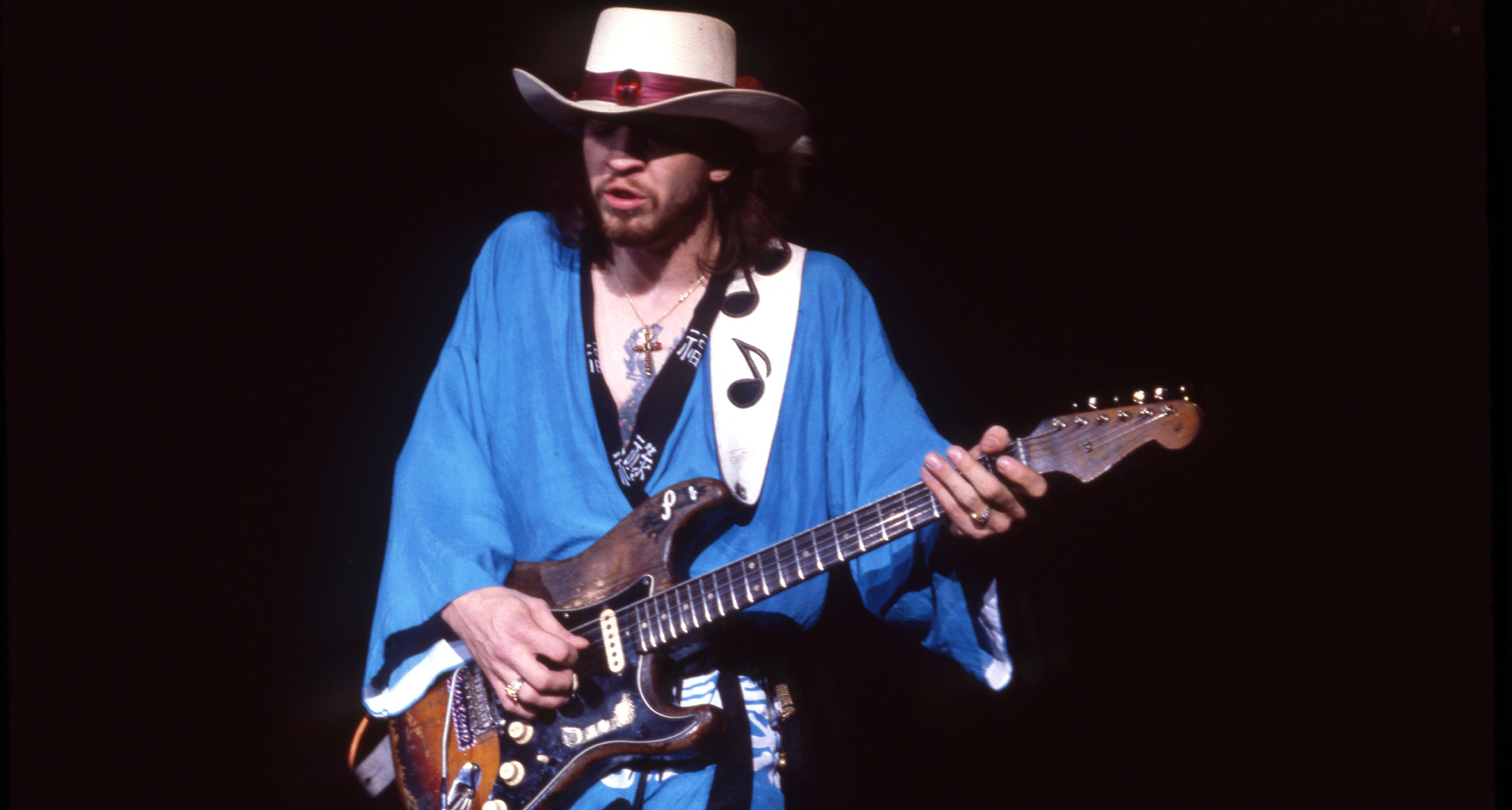“Robbo had grown a beard. Phil says, ‘I’m the only one with facial hair, man – you gotta shave that thing off’”: Scott Gorham on his partnership with Brian Robertson – a golden era for Thin Lizzy even if they nearly split up over facial hair
The years 1974 to '78 were good times for Thin Lizzy creatively, with the twin-guitar dynamite of Robertson and Gorham in the engine room. But they weren't half volatile...
![Scott Gorham [right] and Brian Robertson of Thin Lizzy, long-haired, playing Les Pauls onstage with the legendary Irish rock institution in 1978](https://cdn.mos.cms.futurecdn.net/NRYL34jkDSxxFnJfiiczc7.jpg)
Wind back the clock to ’74, then, and imagine yourself a fly on the wall at the London supper club where the Irish band had set up auditions for a second guitarist to partner their latest recruit, the fiery, soulful Scottish gunslinger, Brian Robertson.
Born a world away in California, and moving to England in 1973 with vague hopes of joining his brother-in-law in the Supertramp line-up, Gorham was now flailing on the pub circuit.
He knew nothing of Lizzy, except that they’d had a minor hit two years earlier with the old Irish traditional Whiskey in the Jar. But it was either: take the audition or crawl home with his rock ’n’ roll dreams dashed.
“I had 30 days left on my visa or they’re gonna throw me out of the country,” he remembers. “I was late and the first guy I meet is [frontman] Phil Lynott, who goes, ‘Let me introduce you to the guys.’
“So we walk in and Phil goes, ‘Hey, everybody, this is Scott’ – and Robbo and Brian Downey [drums] just go, ‘Yeah, yeah.’ I didn’t know they’d already auditioned 24 guitarists, and here comes number 25. I guess they thought, ‘Well, here’s another one we’re going to reject.’ So they didn’t want to get too friendly.”
Likewise, Robertson had no patience to walk yet another hopeful through the set.
“Robbo showed me the first song really quickly and said, ‘You got that?’” explains Gorham.
All the latest guitar news, interviews, lessons, reviews, deals and more, direct to your inbox!
“Then we’re off and running and I’m watching Robbo’s hand on the neck, trying to follow every move, barely making the changes in time. But I’m realising, as I’m struggling with these chord patterns, that these guys are really good. And it was probably after the third song, I said to myself, ‘I gotta be in this band.’”
Robertson was arguably the strongest link in the chain: a startlingly mature player whose fluid phrasing and ear for harmonic extensions was a product of his upbringing.
This guy was younger than me, but he had so much more musical knowledge
“This guy was younger than me, but he had so much more musical knowledge,” says Gorham. “Brian’s father played saxophone in Art Blakey’s jazz band, so he grew up in this atmosphere of scales, tones, all that. He was absolutely more technical than me and our styles were different, but we had to put our egos aside and toe the line.”
So began the duelling harmony guitars of Lizzy MkII. “We were all 5ths and 3rds, that was our whole thing,” explains Gorham. “The metal way of playing harmonies is 7ths and 9ths, but that tweaks my ear. We always tried to hit the sweet spot, and the 5ths and 3rds are the most pleasing to the ear. You can crank it up, or go to the middle setting on a Les Paul at low volume, and those harmonies are still sweet as hell.”
Beyond note choice, even the minutiae of Gorham and Robertson’s touch needed dialling in. “You’re not only trying to get the notation right; you’re trying to get the vibrato in time. Because if one guy has a slow vibrato and the other guy is fast, that’s not gonna work. A lot of people don’t even think about that. But to get a tight sound, those vibratos really have to be together.”
That quest for synergy also led the pair to twin Les Pauls. “I had a really cheap-ass, no-name Japanese Les Paul copy,” says Gorham. “That’s one of the first things Phil said to me: ‘Okay, you’re in, but we gotta change that guitar.’
“So we went to Edgware Road and I bought my sunburst Les Paul. But even before he had the stompboxes and all that, Robbo had some great tones coming out of that guitar.”
Many fans would argue Lizzy’s best output came in that period. Nightlife (1974), Fighting (1975), Jailbreak (1976), Johnny the Fox (1976): all are showcases for the pair’s fist-tight interplay. But Gorham believes the partnership kicked hardest on the boards.
“The album takes, they’re a little slower and more pedestrian, whereas on Live and Dangerous [1978], we kicked it up a gear. The song that Robbo really stamped his personality on was Rosalie. It’s one of his simpler solos, but he really got his point across. While he was playing that, I was playing all the high parts – and the most bitching chords you can ever imagine in your life [laughs]!”
Yet the musical harmony didn’t extend to band relations. While Gorham deferred to Lynott, Robertson never accepted the hierarchy.
It was the masculine struggle of who’s gonna be the dominant person. Well, we all knew who the dominant person was. It was Phil! ‘Dude, he was the guy who hired your ass!’
“Brian didn’t like to take orders,” sighs Gorham, clashing his fists together. “It was the masculine struggle of who’s gonna be the dominant person. Well, we all knew who the dominant person was. It was Phil!
“‘Dude, he was the guy who hired your ass! He’s already got three albums under his belt. This is your first album, so why are you coming out with the attitude? Come on, settle down.’ Well, he did for a while, then he kicked off again.”
Anything could set Robertson off. “I remember our first radio show. We’d just had two weeks off and Robbo had grown a beard. Phil says, ‘I’m the only one with facial hair, man – you gotta shave that thing off.’ Of course, Brian’s going, ‘Fuck you, man!’ ‘Well, if you don’t, you’re out of the band!’ How trivial can you get?
“So Robbo says, ‘All right, I’m quitting the band!’ And I’m going, ‘Whoa, I just quit my band, put all my eggs in this Thin Lizzy basket, and now we’re breaking up over a fucking beard…?!’”
By 1978, even Robertson’s sublime playing couldn’t stop the axe dropping.
“He got back into the band for Bad Reputation [1977],” recalls Gorham of the Scotsman’s last stand. “I had left a whole load of parts for him. He did most of it. But then he said something to Phil, and that was it. Phil had had enough.
“It was like, ‘Scott, I told you he was gonna do this – he’s out.’ I’m like, ‘Okay, man.’ I couldn’t say anything at that point. I’d already got Robbo back into the band and now he’d done it again. It was a real shame.”
- This article first appeared in Guitarist. Subscribe and save.
Henry Yates is a freelance journalist who has written about music for titles including The Guardian, Telegraph, NME, Classic Rock, Guitarist, Total Guitar and Metal Hammer. He is the author of Walter Trout's official biography, Rescued From Reality, a talking head on Times Radio and an interviewer who has spoken to Brian May, Jimmy Page, Ozzy Osbourne, Ronnie Wood, Dave Grohl and many more. As a guitarist with three decades' experience, he mostly plays a Fender Telecaster and Gibson Les Paul.
You must confirm your public display name before commenting
Please logout and then login again, you will then be prompted to enter your display name.



